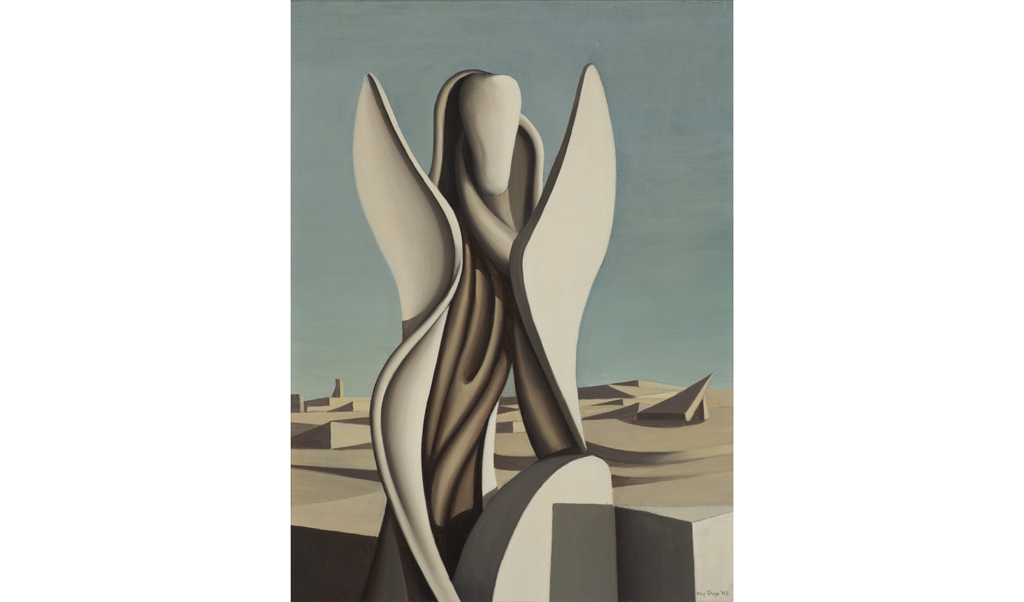1850-1950: A Global Artworld Art Review

Table of Contents
The Rise of Realism and its Offshoots (1850-1870s)
Realism in France: Courbet, Millet, and the Depiction of Everyday Life
Realism, a reaction against the Romantic ideals of the earlier period, prioritized the accurate representation of everyday life. This movement, flourishing in France, aimed to depict the world as it was, without idealization or sentimentality. Key characteristics of Realism include:
- Focus on ordinary subjects: farmers, workers, and the marginalized.
- Detailed and precise representation: a meticulous approach to capturing reality.
- Rejection of idealized beauty: an embrace of the unvarnished truth.
Gustave Courbet's The Stone Breakers and Jean-François Millet's The Gleaners are prime examples of this unflinching portrayal of working-class life, provoking social commentary and challenging the established artistic conventions. These paintings from this era of art history served as potent critiques of social inequality.
Realism's Global Influence: How Realism Spread beyond France and Adapted to Different Cultural Contexts
Realism's impact extended far beyond France. Its emphasis on accurate observation resonated with artists worldwide, although it took on different forms and interpretations depending on the cultural context:
- Realism in America: Artists like Winslow Homer focused on depicting American landscapes and everyday life with a similar level of detail and realism.
- Realism in Russia: The Peredvizhniki (Wanderers) movement embraced Realism to portray the hardships of peasant life and advocate for social reform.
Regional variations of Realism arose, reflecting unique cultural perspectives and social realities, expanding the scope of Global Art History 1850-1950.
Transition to Impressionism: The Seeds of Impressionism within Late Realism
The late stages of Realism paved the way for Impressionism. Some artists, while committed to realistic observation, began experimenting with looser brushstrokes and a greater focus on the effects of light and atmosphere. This transition is evident in the works of certain artists who bridged the gap between these two significant art movements of the 19th century. This period of transition saw:
- A shift toward capturing fleeting moments.
- Increased emphasis on light and its effects on color.
- A loosening of brushwork and a greater emphasis on spontaneity.
The Impressionist Revolution and its Legacy (1870s-1890s)
Key Impressionist Artists and their Techniques: Monet, Renoir, Degas, etc.
Impressionism, with its revolutionary approach to painting, fundamentally changed the course of art history. Artists like Claude Monet, Pierre-Auguste Renoir, Edgar Degas, and Camille Pissarro:
- Emphasized the subjective experience of light and color.
- Captured the fleeting impression of a moment rather than precise detail.
- Used short, visible brushstrokes and vibrant colors to create a sense of movement and energy.
Monet's Impression, soleil levant (Impression, Sunrise) gave the movement its name, while Renoir's Bal du moulin de la Galette captures the vibrant energy of Parisian life.
The Impact of Photography: How Photography Influenced Impressionism and Subsequent Art Movements
The development of photography significantly impacted Impressionism and beyond. The camera's ability to capture reality quickly influenced artists to focus less on meticulous detail and more on capturing the transient aspects of light, movement, and atmosphere. This shift in focus is evident in the art of this period.
- A move away from precise representation toward capturing fleeting moments.
- A focus on the subjective interpretation of reality.
- The exploration of new ways to represent light and perspective.
Post-Impressionism: Cézanne, Van Gogh, Gauguin, and the Move beyond Impressionism
Post-Impressionism, while building upon Impressionism's techniques, explored new expressive possibilities. Artists like Paul Cézanne, Vincent van Gogh, and Paul Gauguin moved beyond simply capturing visual impressions:
- Cézanne's work emphasized geometric forms and structure.
- Van Gogh's paintings were intensely emotional and expressive, characterized by bold brushstrokes and vibrant colors.
- Gauguin sought to capture the primitive and exotic, exploring symbolic representation.
The Birth of Modernism and its Diverse Expressions (1890s-1950s)
Art Nouveau: Its Decorative Style and Influence on Architecture and Design
Art Nouveau, with its organic and flowing forms, greatly influenced architecture and design during this period:
- Key characteristics include flowing lines, floral motifs, and a sense of elegance.
- Prominent artists included Alphonse Mucha, known for his beautiful posters.
- Its influence is still visible in buildings and decorative arts worldwide.
Fauvism and Expressionism: Emotional Intensity and Bold Use of Color
Fauvism and Expressionism prioritized emotional expression over realistic representation:
- Fauvism, championed by Henri Matisse and André Derain, used bold, non-naturalistic colors.
- Expressionism, exemplified by artists like Ernst Ludwig Kirchner and Edvard Munch, emphasized the artist's subjective emotions and inner world.
Cubism and its Influence: Picasso, Braque, and the Fragmentation of Form
Cubism, pioneered by Pablo Picasso and Georges Braque, revolutionized the way artists perceived and depicted space and form:
- Key characteristics include the fragmentation of objects into geometric shapes and multiple perspectives.
- Different phases of Cubism evolved, each with its own unique characteristics.
- Cubism profoundly influenced subsequent art movements, particularly abstract art.
Surrealism and Dadaism: Exploring the Subconscious and Challenging Artistic Conventions
Surrealism and Dadaism challenged artistic conventions and explored the realms of the subconscious:
- Surrealists like Salvador Dalí and Joan Miró sought to depict dreams and the irrational.
- Dadaists, led by Marcel Duchamp, embraced absurdity and challenged traditional notions of art.
The Rise of Abstract Art: Kandinsky, Mondrian, and the Non-Representational Approach
Abstract art, abandoning representational forms entirely, emerged as a major movement:
- Wassily Kandinsky explored the expressive power of color and form.
- Piet Mondrian's work emphasized geometric abstraction and primary colors.
- The development of abstraction marked a major shift in artistic thinking.
Global Perspectives: Art Movements in Asia, Africa, and Latin America During This Period
It’s crucial to acknowledge that the art movements discussed above weren't the only significant artistic developments during this period. Many vibrant and unique artistic traditions flourished in Asia, Africa, and Latin America. These movements, often developing independently of Western trends, made significant contributions to the richness and diversity of global art history during the period of 1850-1950. Further research into these areas will reveal a far richer and more nuanced understanding of the "Art of the 19th and Early 20th Century."
Conclusion: A Global Perspective on Art, 1850-1950
This "1850-1950: A Global Artworld Art Review" has highlighted the major artistic developments and movements that shaped modern and contemporary art. From the realistic depictions of everyday life to the abstract explorations of form and color, this period witnessed a profound transformation in artistic expression, with significant interconnectedness across cultures. The rise of Realism, the revolutionary impact of Impressionism, the diverse expressions of Modernism, and the emergence of Abstract Art all contributed to a rich and complex tapestry of artistic innovation.
Key Takeaways: The period 1850-1950 represents a pivotal moment in art history, marking a dramatic shift from traditional styles to the diverse and innovative artistic languages that define modern and contemporary art. Understanding this era is crucial for appreciating the development of artistic thought and practice in the 20th and 21st centuries.
Call to Action: Continue your exploration of 19th and early 20th-century global art by researching specific artists or movements that caught your interest. Dive deeper into the rich history of Art Movements 1850-1950 and discover the fascinating stories and artistic innovations that shaped our world. Explore online museum collections, delve into art history books, and visit galleries to further enhance your understanding of this pivotal era in art history.

Featured Posts
-
 Jyoti Malhotra Details Emerge In Pakistan Spying Case
May 19, 2025
Jyoti Malhotra Details Emerge In Pakistan Spying Case
May 19, 2025 -
 Regulatory Issues Halt Ubers Acquisition Of Foodpanda In Taiwan
May 19, 2025
Regulatory Issues Halt Ubers Acquisition Of Foodpanda In Taiwan
May 19, 2025 -
 The Rise Of Paige Bueckers Fueling The Dallas Wings And The Wnba
May 19, 2025
The Rise Of Paige Bueckers Fueling The Dallas Wings And The Wnba
May 19, 2025 -
 Children Rescued Parents Arrested The Dalfsen Amber Alert
May 19, 2025
Children Rescued Parents Arrested The Dalfsen Amber Alert
May 19, 2025 -
 Tatar In Aciklamalari Sonrasi Direkt Ucuslar Ve Kibris Sorunu
May 19, 2025
Tatar In Aciklamalari Sonrasi Direkt Ucuslar Ve Kibris Sorunu
May 19, 2025
